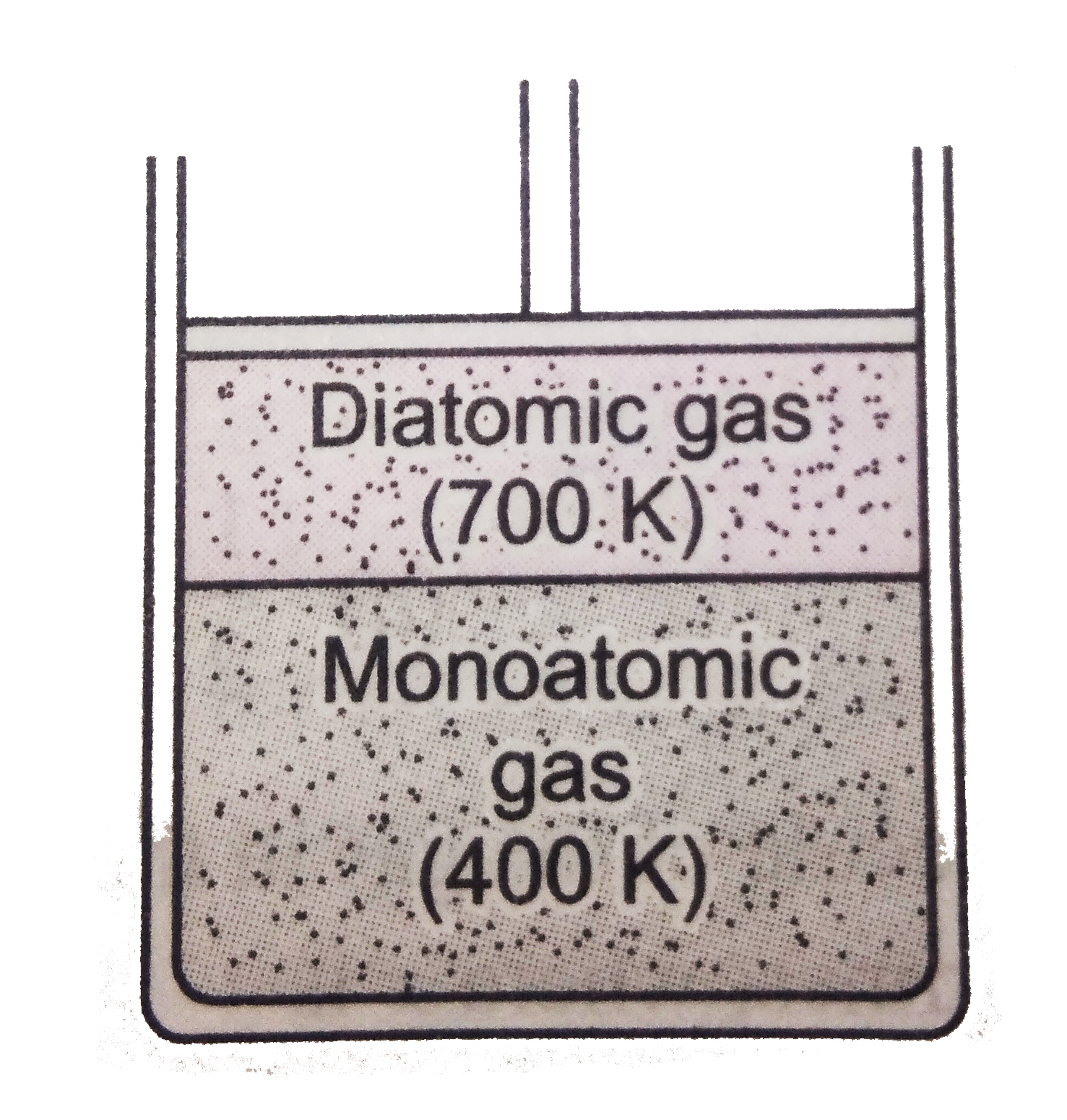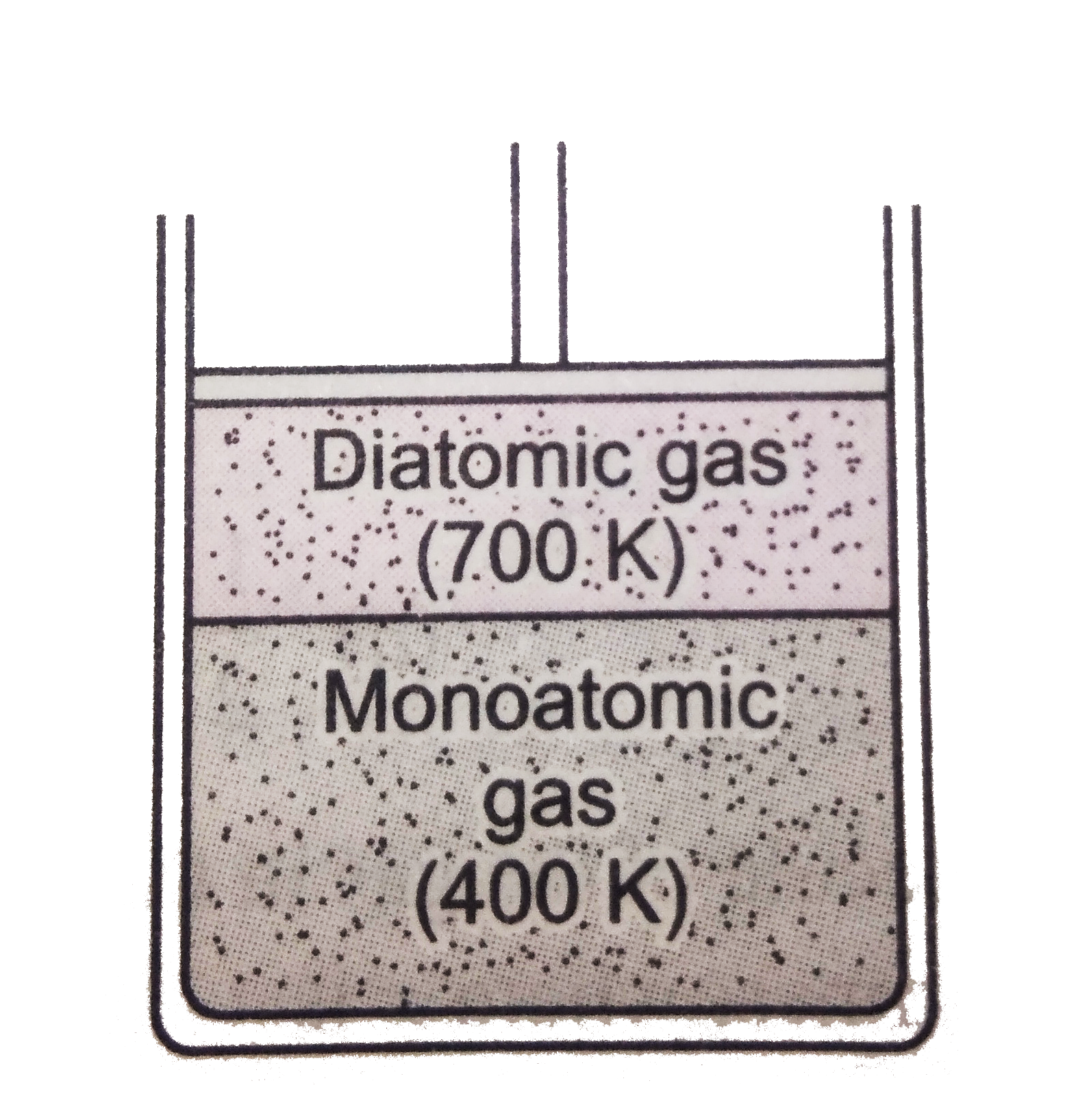Complete Solutions to Multiple choice questions-III of chapter BEHAVIOUR OF PERFECT GAS & KINETIC THEORY of Class 11 book with complete answers and questions
| Class 11 | PHYSICS |
| Chapter | BEHAVIOUR OF PERFECT GAS & KINETIC THEORY |
| PRADEEP | Multiple choice questions-III |
| Number Of Questions | 12 |
| Academic Year | 2023-24 |
The pressure exerted by an ideal gas is `P = (1)/(3) (M)/(V)C^(2)`, where the symbols have their usual meaning. Using standard gas equation, PV = RT, we find that `C^(2) = (3 RT)/(M) or C^(2) oo T`. Average kinetic energy of translation of one mole of gas ` =(1)/(2) MC^(2) = (3 RT)/(2)` with the help of the passage given above, choose the most appropriate alternative for each of the following quetions :
Average thermal energy of a helium atom at room temperature `(27^(@)C)` is Given, Boltzmann constant `k = 1.38 xx 10^(-23) JK^(-1)` :
View SolutionThe pressure exerted by an ideal gas is `P = (1)/(3) (M)/(V)C^(2)`, where the symbols have their usual meaning. Using standard gas equation, PV = RT, we find that `C^(2) = (3 RT)/(M) or C^(2) oo T`. Average kinetic energy of translation of one mole of gas ` =(1)/(2) MC^(2) = (3 RT)/(2)` with the help of the passage given above, choose the most appropriate alternative for each of the following quetions :
Average thermal energy of one mole of helium at this temperature is (Given gas constant for 1 gram mole `=8.31 J "mole"^(-1) K^(-1)`.
View SolutionThe pressure exerted by an ideal gas is `P = (1)/(3) (M)/(V)C^(2)`, where the symbols have their usual meaning. Using standard gas equation, PV = RT, we find that `C^(2) = (3 RT)/(M) or C^(2) oo T`. Average kinetic energy of translation of one mole of gas ` =(1)/(2) MC^(2) = (3 RT)/(2)` with the help of the passage given above, choose the most appropriate alternative for each of the following quetions :
Average thermal energy of a helium atom at 600 K would be
View SolutionThe pressure exerted by an ideal gas is `P = (1)/(3) (M)/(V)C^(2)`, where the symbols have their usual meaning. Using standard gas equation, PV = RT, we find that `C^(2) = (3 RT)/(M) or C^(2) oo T`. Average kinetic energy of translation of one mole of gas ` =(1)/(2) MC^(2) = (3 RT)/(2)` with the help of the passage given above, choose the most appropriate alternative for each of the following quetions :
At what temperature, pressure remaining unchanged, will the rms velocity of hydrogen be double its value at NTP ?
View SolutionThe pressure exerted by an ideal gas is `P = (1)/(3) (M)/(V)C^(2)`, where the symbols have their usual meaning. Using standard gas equation, PV = RT, we find that `C^(2) = (3 RT)/(M) or C^(2) oo T`. Average kinetic energy of translation of one mole of gas ` =(1)/(2) MC^(2) = (3 RT)/(2)` with the help of the passage given above, choose the most appropriate alternative for each of the following quetions :
At waht temperature, pressure remaining unchanged, will the rms velocity of a gas be half its value at `0^(@)C`?
View SolutionIf `C_(1), C_(2), C_(3)`......are random speed of gas molecules, then average speed `C_(av)= (C_(1)+C_(2)+C_(3)+...C_(n))/(n)` and root mean square speed of gas molecules, `C_(rms) = sqrt((C_(1)^(2)+C_(2)^(2)+C_(3)^(2)+...C_(n)^(2))/(n)) =C`. Further , `C_(2) prop T or C prop sqrt(T)` at `0k, C=0`, ie., molecular motion stops. With the help of the passage given above , choose the most appropriate alternative for each of the following question:
If three molecules have velocities `0.5, 1` and `2km//s`, the ratio of rms speed and average speed is
View SolutionIf `C_(1), C_(2), C_(3)`......are random speed of gas molecules, then average speed `C_(av)= (C_(1)+C_(2)+C_(3)+...C_(n))/(n)` and root mean square speed of gas molecules, `C_(rms) = sqrt((C_(1)^(2)+C_(2)^(2)+C_(3)^(2)+...C_(n)^(2))/(n)) =C`. Further , `C_(2) prop T or C prop sqrt(T)` at `0k, C=0`, ie., molecular motion stops. With the help of the passage given above , choose the most appropriate alternative for each of the following question:
Temperature of a certain mass of a gas is doubled. the rms speed of its molecules becomes n times. where n is
View SolutionIf `C_(1), C_(2), C_(3)`......are random speed of gas molecules, then average speed `C_(av)= (C_(1)+C_(2)+C_(3)+...C_(n))/(n)` and root mean square speed of gas molecules, `C_(rms) = sqrt((C_(1)^(2)+C_(2)^(2)+C_(3)^(2)+...C_(n)^(2))/(n)) =C`. Further , `C_(2) prop T or C prop sqrt(T)` at `0k, C=0`, ie., molecular motion stops. With the help of the passage given above , choose the most appropriate alternative for each of the following question:
`KE` per molecule of the gas in the above question becomes x times, where x is
View SolutionIf `C_(1), C_(2), C_(3)`......are random speed of gas molecules, then average speed `C_(av)= (C_(1)+C_(2)+C_(3)+...C_(n))/(n)` and root mean square speed of gas molecules, `C_(rms) = sqrt((C_(1)^(2)+C_(2)^(2)+C_(3)^(2)+...C_(n)^(2))/(n)) =C`. Further , `C_(2) prop T or C prop sqrt(T)` at `0k, C=0`, ie., molecular motion stops. With the help of the passage given above , choose the most appropriate alternative for each of the following question:
`K.E.` per gram mole of hydrogen at `100^(@)C` (given `R = 8.31 J "mole"^(-1)K^(-1)`) is
View SolutionIf `C_(1), C_(2), C_(3)`......are random speed of gas molecules, then average speed `C_(av)= (C_(1)+C_(2)+C_(3)+...C_(n))/(n)` and root mean square speed of gas molecules, `C_(rms) = sqrt((C_(1)^(2)+C_(2)^(2)+C_(3)^(2)+...C_(n)^(2))/(n)) =C`. Further , `C_(2) prop T or C prop sqrt(T)` at `0k, C=0`, ie., molecular motion stops. With the help of the passage given above , choose the most appropriate alternative for each of the following question:
At what temperature, pressure remaining constant will the rms speed of a gas molecules increase by `10%` is the rms speed at NTP?
View SolutionIn Fig., a container is shown to have a movable (without friction) piston on top. The container and the piston are all made of perfectly insulating material allowing no heat transfer between outside and inside the container. The container is divided into two compartments by a rigid partition made of a thermally conducting material that allows slow transfer of heat. the lower compartment of the container is filled with 2 moles of an ideal monoatomic gas at 700 K and the upper compartment is filled with 2 moles of an ideal diatomic gas at 400 K. the heat capacities per mole of an ideal monoatomic gas are `C_(upsilon) = (3)/(2) R and C_(P) = (5)/(2) R`, and those for an ideal diatomic gas are `C_(upsilone) = (5)/(2) R and C_(P) = (7)/(2) R.`
Consider the partition to be rigidly fixed so that it does not move. when equilibrium is achieved, the final temperature of the gases will be

View SolutionIn Fig., a container is shown to have a movable (without friction) piston on top. The container and the piston are all made of perfectly insulating material allowing no heat transfer between outside and inside the container. The container is divided into two compartments by a rigid partition made of a thermally conducting material that allows slow transfer of heat. the lower compartment of the container is filled with 2 moles of an ideal monoatomic gas at 700 K and the upper compartment is filled with 2 moles of an ideal diatomic gas at 400 K. the heat capacities per mole of an ideal monoatomic gas are `C_(upsilon) = (3)/(2) R and C_(P) = (5)/(2) R`, and those for an ideal diatomic gas are `C_(upsilone) = (5)/(2) R and C_(P) = (7)/(2) R.`
Now consider the partition to be free to move without friction so that the pressure of gases in both compartments is the same. the total work done by the gases till the time they achieve equilibrium will be

View Solution
Multiple choice questions-III questions and complete solutions for chapter BEHAVIOUR OF PERFECT GAS & KINETIC THEORY of PRADEEP PHYSICS (HINGLISH) of Class 11
All Exercises from PRADEEP Class 11 PHYSICS BEHAVIOUR OF PERFECT GAS & KINETIC THEORY
- Advance problem for competitions
- Assertion - Reason Type questions
- Conceptual Problems
- Curiosity Question
- Fill in the blanks
- Higher order thinking skills questions
- Integer type questions
- Long answer questions
- Multiple choice questions-I
- Multiple choice questions-II
- Multiple choice questions-III
- NCERT questions
- Problems for practice
- Sample problem
- Short answer questions
- Solved Examples
- Value Based Questions
- Very short Answer questions